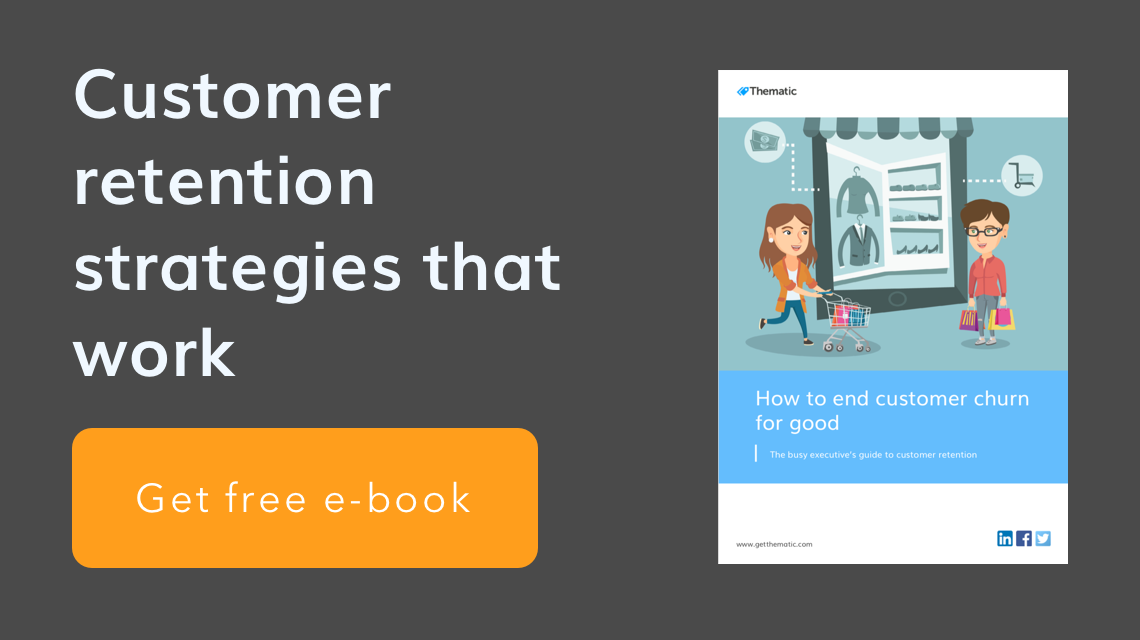3 key drivers of customer satisfaction, according to David Raab
Using customer insights to increase customer satisfaction and retain customers are key objectives for most companies worth their salt. We had a quick-fire Q&A with David Raab, Principal at Raab Associates Inc, to get his thoughts on how to create a better customer experience.
We asked him the essential questions that most customer-centric companies are focusing on these days. And the answers, according to David, are not necessarily what you might think…
Q: What are 3 key factors affecting customer satisfaction?
A: Interestingly, contrary to what people might think, customers are generally more pragmatic than we give them credit for.
1. Price not as important as we think
Yes, price is still the driving factor in most purchase decisions but, is actually quickly forgotten once the purchase is made. After that, satisfaction is primarily based on whether the product performs as expected, is easy to use, and doesn’t break.
2. Customer expectations have changed
An experience that is unexpectedly delightful can boost satisfaction but it’s probably not necessary in most cases. It’s interesting to note that customer expectations have changed massively compared with thirty or forty years ago: back then, there were great differences in the actual reliability of products, so people were willing to pay extra for a product they knew to be reliable.
3. Failure to perform is lethal
Today, we assume that any product will work and continue to work, even if we paid a low price for it. That makes failure a more harmful event when it does come – although people may assume it’s a fluke, rather than inherent in a particular company’s product unless it fails repeatedly. Either way, dealing with a failed product by repairing or replacing it quickly and without argument is critical to satisfaction when a failure does occur.
Q: Can we leverage customer insight through employees?
A: I’m not so sure about getting customer insights, since frontline employees actually see only a small fraction of all customer information. This limits the amount of insight they can generate. Of course, they do have direct interactions, which provide valuable information that isn’t captured in transactional data. The trick is getting the employees to pay attention to customer behaviors and to transmit their insights back to company managers.
The role of frontline employees in loyalty is much greater, of course. They are the ones to deliver service and, most important, deal with problems when things don’t go quite as expected.
Successful interactions require both good employee attitudes and empowerment for employees to act as appropriate in a given situation. Both attitudes and empowerment are the product of company culture – so management is still ultimately responsible for what happens.
Q: Are customer loyalty programs effective enough to retain customers?
A; Yes, I’m a believer. The actual rewards may not always be important, but loyalty programs offer other benefits including recognition and accomplishment (via “gamification”) that can also be powerful motivators.
Again, customers are highly pragmatic, so they will only respond to loyalty programs when there is a substantial benefit. This means they’ll engage with businesses they deal with regularly (e.g., a grocery store where they shop weekly) or intensively (an airline).
Q; What’s the key formula for customer retention? Do we need to strive for consistent, positive customer experiences or continuous improvement?
A: Consistent, positive experiences are adequate in nearly all cases. There’s some research showing that inconsistent rewards are actually more effective than consistent rewards, but I think in the real world with most products, people are generally not looking for uncertainty. Of course, companies should always be striving to improve their services, so regular improvements should occur even if there’s not a conscious effort to make each one better.
Q: What’s your distinction between customer experience and user experience?
A; It’s not a distinction I usually make. User experience is generally applied to users of computer systems including Web sites, while customer experience applies to all experiences. So, I guess that’s the relationship. But we strive to make both of them as good as they can be.
Q: Should businesses focus on retaining dissatisfied customers or acquiring new leads?
A; This is a trick question, right? Surely the real answer is they should concentrate on satisfying customers before they become dissatisfied. But to answer directly, a dissatisfied customer does great damage by telling friends about their bad experience, so it’s quite important to fix their problems.
This often turns them into advocates, which helps find more new customers. Making extraordinary efforts to satisfy unhappy customers also sends a clear message to the organization that customer satisfaction is a priority. This is a critical value to convey if you want your organization to treat its customers well.
Thanks to David for taking the time to answer our questions!
David Raab consults on marketing technology, vendor selection, and analytics. His clients have included companies in retail, travel, communications, financial services, technology, healthcare, and other industries. Mr. Raab is the author of the Marketing Performance Measurement Toolkit and founder of the Customer Data Platform Institute. For more information, visit www.raabassociatesinc.com.






